Excerpts from: A HOUSE WITH MEMORIES OF THE KATIPUNAN, Fernando N. Zialcita

Reproduced from the book “Julio Nakpil and the Philippine Revolution” by Encarnacion Alzona.
THEY LIVED HERE

Professor of medicine, philanthropist, member of the Malolos Congress
(Feb 22, 1863 – Mar 3, 1928)
ARISTON BAUTISTA Y LIN
Professor of medicine, philanthropist, member of the Malolos Congress
(Feb 22, 1863 – Mar 3, 1928)
Source: Dictionary of Philippine Biography
He was the son of Mariano A. Bautista and Teresa Limpingco, and was born in Sta. Cruz, Manila. Bautista was married to Petrona Nakpil in 1903.
His house on Barbosa Street [now named after him, A. Bautista Street], Quiapo, Manila, used to be a small art museum of antiques and paintings of representative Filipino arts. His library is now with the University of the Philippines Medical Museum started by Dr. Geminiano de Ocampo².
A collegue, Dr. Jose P. Bantug, described him:
“Who among us do not remember this great man? Simple in his dress, he always had a good word for a colleague. He was fortunate as a clinician, as a therapeutist, he was among the most outstanding. His followers among his pupils were many. As a philanthropist, he was never an egoist. He never made a secret of this excellent prescriptions when he could have made money on them. He did not want to make money on the lives of his countrymen, whenever, there was a likelihood of an epidemic of cholera. As a professor, his lectures were colored with interesting anecdotes.”
Education
After obtaining his Bachiller in Artes from the Ateneo Municipal, he took up medicine in the University of Sto. Tomas where he received the degree of Licenciado en Medicina in March 1885. He saw service during the cholera epidemic of the same year.
As his family had means, he was sent to Spain to pursue advanced studies in medicine; from the Universidad Central de Madrid he obtained the degree of Doctor en Medicina after presenting a thesis entitled Consideraciones Acerca de los Abscesos del Hígado en los Climas Cálidos. After graduation he visited leading hospitals of Europe such as those found in Paris, Berlin and Brussels.
Propagandist
During his stay in the Peninsula he worked with the Filipino propagandists abroad. Upon his return to Manila, he joined Nilad Lodge, one of the groups that supported “La Propaganda” for the support of the cause abroad. Upon the outbreak of the Revolution, he was arrested and thrown into Fort Santiago, though he was freed later. During the second stage of the Revolution, he served as delegate to the Malolos Congress and as professor of clinical medicine in the faculty of medicine, in the Univ. Científico-Literaria de Filipinas.
Philanthrophist
He founded the Germinal Cigar & Cigarette Co. and became its president. This gave him substantial income to enable him to support in one way or another the expenses of students abroad, such as Fabian de la Rosa (q.v.) to further his study of painting in Europe; and afterwards was responsible in financing wholly or partially other students such as Elias Domingo, who became a specialist in nervous diseases (M.D.); Mariano Cruz, surgeon and x-ray specialist (M.D.); Francisco Villaroman, surgeon (M.D.); Ernesto Vallejo, violinist virtuoso; Maria Lanzar, to pursue studies in political science (Ph.D.); Juan Nakpil, architect; and others.
Dr. Bautista was also known for small or considerable philanthropic doles or donations. He helped hospitals and religious organizations in the way he knew best. He spent for poor patients, rendered service to them free and bought them medicine. He was in the group of patrons who financed the bringing of an Italian opera company so as to be able to present Tosca in Manila, together with Macario Nicasio, Manuel Earnshaw and the Paterno brothers. In fact he was a lover of the arts and an enthusiastic supporter of Tagalog drama.
Businessman
He was one of the directors of the Agricultural Bank. It was in this connection that Gov. Gen. Forbes appointed him with Sr. Rosales of the Companía General de Tabacos de Filipinas to study ways and means of financing the needs of sugar planters. In 30 days time the government decided to introduce the crop loan system, acting on the advice of the committee. He was one of the prime movers for holding the first agricultural congress in the country and the establishment of a national bank bigger in scope than the Agricultural Bank, a concept which led eventually to the the reorganization of the latter bank and the creation of the Philippine National Bank.
Professional accomplishments
Upon the establishment of the College of Medicine and Surgery on 1907, Dr. Bautista was appointed professor of clinical medicine and therapeutics.¹ He became head of the department of medicine when Dr. Musgrave resigned. In 1926 he was a member of the educational mission which visited the U.S. He continued the trip to Paris where he stayed several months making observations of lung diseases in which he was counted among the few specialists in the country.
He was active in the affairs of the Colegio Medico-Farmaceutico, the Phil. Medical Association, and the Liga Nacional Filipina para la Protección de la Infacia; he was physician of St. Paul’s Hospital and was president of the examining board for medicine.
Notes:
¹The College was opened for instruction on June 10, 1907 (UP Bulletin No. 1, 1911, p. 97, 101
²Primitivo C. Milan “2 Medical Museums” Sunday Times Magazine, May 31, 1959
³History of Medicine in the Philippines (1953), p. 148
References:
Frank E. Jackson: Representative Men of the Philippines (1906)
Manuel Artigas y Cuerva: Galeria de Filipinos Ilustres, II (Manila:1917) 313-325
“Dr. Ariston Bautista: Noted Filipino Physician Dies” The Tribune, March 4, 1928
Necrological speeches by Dr. Fernando Calderon, Dr. Benito Valdes, and Dr. Carmelo Reyes, in Revista Filipina de Medicina y Farmacia, XIX, no. 4 (Apr 1928) 88-94
“Dr. Ariston Bautista” Phil. Free Press, March 10, 1928, pp. 4, 34-40
Sources:
Julio Nakpil and the Philippine Revolution, Encarnacion Alzona;
http://www.msc.edu.ph/centennial/gdjesus.html;
http://www.filipiniana.net
